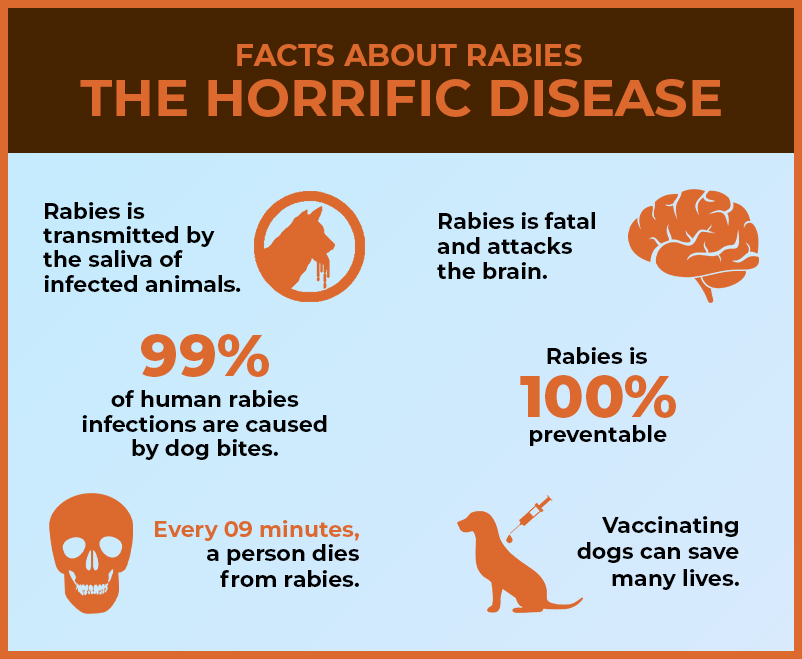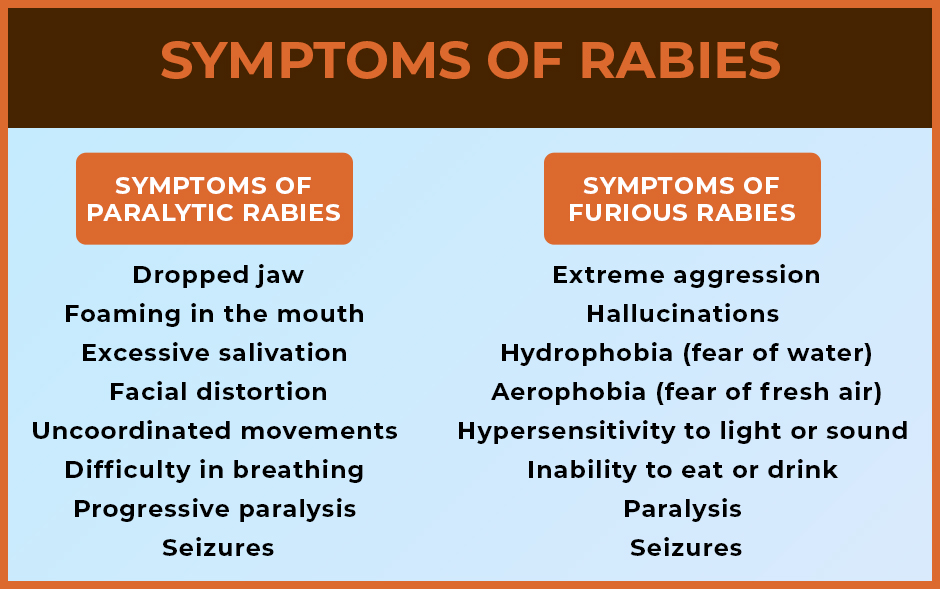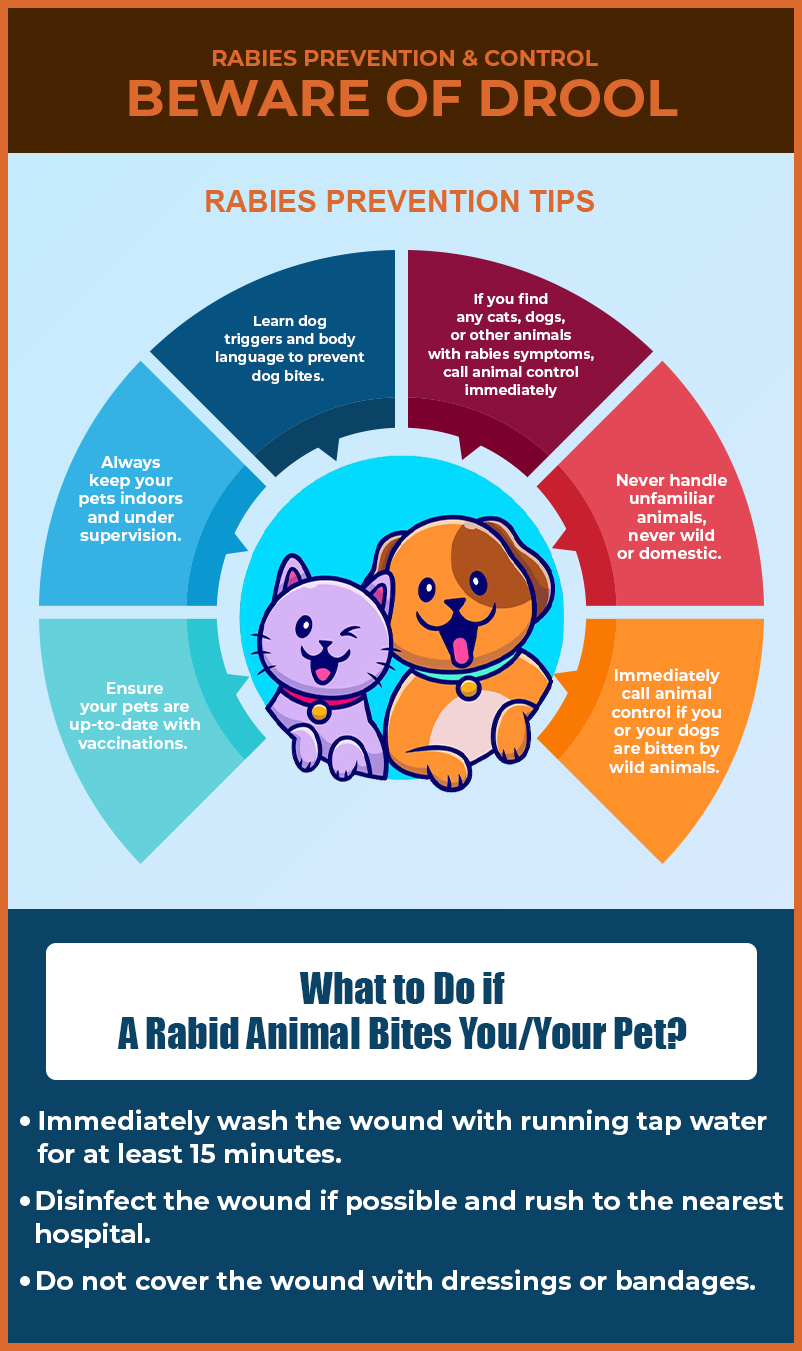September 28th is designated as World Rabies Day to mark the death anniversary of Louis Pasteur, a French Chemist and microbiologist who developed the first rabies vaccine. The day aims to raise awareness about this terrible disease and promote its preventive measures to minimize the number of deaths caused by it. This article is our attempt to make pet owners aware of rabies while discussing its types, symptoms, and preventive measures. We will also walk through a few thoughtful ways to celebrate World Rabies Day.
What is Rabies and Why is it Dangerous?
Rabies is a deadly yet preventable viral disease transmitted through animal bites. The rabies virus is a Lyssavirus (meaning rage poison in Latin) that spreads from the saliva of infected animals. It affects the central nervous system of animals, causing damage to their brain and spinal cord. The rabies virus commonly affects dogs, cats, humans, and any other mammal.

Generally, the disease progresses in two forms:
1. Paralytic Rabies
Dogs are mostly affected by the paralytic form of rabies. Initially, this type of rabies causes paralysis of the throat and jaw muscles, progressing to the entire body. Dogs affected by paralytic rabies may rarely attempt to bite.
2. Furious Rabies
Furious rabies is the typical type resulting in the scary symptoms that you have always heard about. In this type of rabies, the dog or the affected animal loses control, suffers from hyperactivity and hallucinations, and may aggressively bite or attack other people or animals.
Rabies is a 100% fatal disease. According to the Center for Disease Prevention and Control (CDC), rabies causes 59000 human deaths yearly worldwide. And, unfortunately, in up to 99% of cases, domestic dogs are responsible for the transmission.
What are the Symptoms of Rabies in Dogs?

Typically, rabies symptoms develop in two stages. The initial signs of rabies in dogs may include sudden behavior changes, anxiety, shyness, aggression, fever, vocal changes, running for no apparent reason, etc.
This may be followed by the second stage of the disease, which may cause seizures, difficulty in swallowing, excessive salivation, paralysis, uncoordinated movements, etc.
After initial symptoms develop, the type of progression of rabies may be clearly defined based on the final stage symptoms.
Furthermore, the symptoms may also differ based on the type of rabies progression.
Rabies Prevention and Control

The World Health Organization’s rabies prevention guidelines empower people to save pets and humans from this life-threatening disease.
These guidelines include three effective interventions:
- Spreading awareness about identifying rabies infected animals and steps to follow in the case of an animal bite.
- Post-exposure prophylaxis, which includes a series of vaccines after suspected exposure to the virus.
- Mass dog vaccination to stop the transmission of the rabies virus.
[Also Read] 6 Most Common Dog Diseases
How to Celebrate World Rabies Day
Every year, the Global Alliance for Rabies Control chooses a theme to celebrate World Rabies Day. These themes focus on spreading more awareness about education, vaccination, and prevention of rabies.
If you are kind and responsible enough to join this campaign, here are five excellent ways you can observe World Rabies Day and help create a rabies-free world:
1. Educate People About Rabies Vaccination
Rabies vaccination is the best way to reduce rabies cases worldwide. Vaccinating your furry friends will not only keep them safe but also reduce the chances of infection in animals and humans.
2. Volunteer at a Local Animal Shelter
Take some time out and volunteer at a local animal shelter to ensure all the pets in your area are vaccinated. You can come up with ideas that will help animal shelters spread awareness.
3. Donate to Animal Health Care Facilities
Every year various animal health care facilities around the world arrange drives for rabies vaccination and surveillance. Donating will help protect animals and people from this preventable disease.
4. Spread Awareness with Social Media Posts
Social media is a great medium of communication these days. Share symptoms and prevention tips that will help them suspect rabies and guide them in the event of a bite.
5. Organize Rabies Awareness Campaigns
You can organize rabies awareness campaigns for your community and educate people about how they can help if they ever come across rabid animals or if a rabid animal bites someone.





